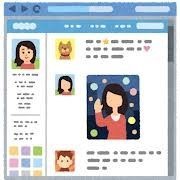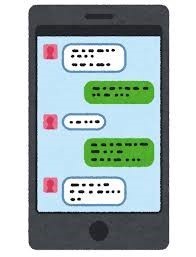



As our technology is getting better day by day, our way of communication is also changing. With the new technology, we can communicate with our friends and family from anywhere in the world and at any time. We can share photos, videos, our messages and so much more. But somewhere in this world of online communication, we are also observing an interesting trend of changes happening in our language; its structure and vocabulary all of it seems to be evolving.
We often encounter new words and phrases like low key, high key, spill the tea, fr, FYI, etc. Words and phrases like these get automatically added into our vocabulary nowadays. We can see this trend of evolution occurring in the languages from all around the world. Almost all languages are changing with the developing technology and Japan is no exception to this. So, in this post we will discuss some of these trends occurring in the Japanese language and see a few examples for the Japanese language learners.

When social media became mainstream, the one thing that was the most appealing about it was its quickness and efficiency. Earlier when letters and books were used as a medium of communication, the process of communication was much slower. Letters would take days or even weeks to reach the other person. This made the people sit down and write each word with enough thought and as elaborate as possible. People would write their letters carefully and explain their messages clearly.

But this has changed with the introduction of social media. Social media can send messages within seconds to all parts of the world. Now people do not have to wait to send and receive their messages, on the contrary, they are supposed to write and share their messages as quickly as possible. This pressure to send messages in a short form makes the people more creative and influence them to add new words and abbreviations in their language to share their message without explaining in detail.
Apart from this trend of fast and efficient communication, social media has changed languages in many other ways. Some of these in the context of Japanese language are described in next sections.
In this digital age we want to cut time on texting long words and share our message in a short time. Because it's not like that this letter will take days to reach the reader, so I should write everything in detail. Now I can send a text and receive texts in seconds. And I can send multiple of them in a row. So, now I want to send texts that are short, have enough information, and are quick to read. That is why, most people nowadays like to use abbreviations in their messages.

For example: many Japanese people like to use “www”, in order to suggest to the reader that they are laughing. This is similar to the “lol” of English. And when used like “wwwwww” it suggests that the writer is laughing very hard.
Also, “JK” is used for saying “high school girl” and “888” is used to denote clapping.
Rather than typing our every emotion in words, it's always better to just use a sticker or emoji. It is convenient and we can share our feelings and emotions much more nicely. This mindset is also seen in Japanese people. Nowadays, people like to use emojis, emoticons and stickers a lot more to express their feelings and emotions.

Examples: 🍣 meaning sushi/food/tasty/hungry, 🐱 meaning a happy face/ agreement etc.
For emoticons, some examples are: “(^_^)” meaning happy, “(///ω///)” meaning blushing,
“( ̄- ̄)” meaning thinking, and “(≧▽≦)” meaning crying with laughter.
In this world of digital communication, we are becoming like a global village. Now people who speak different languages, and different cultural backgrounds can connect with others in various ways. Sharing and commenting on the same type of content helps people to relate with people with different backgrounds. And this leads to the introduction of foreign words in our day to day lives. This is the same in Japan as well, you can commonly see people use English loanwords in their lives, in both online and offline settings.

For example: アプリ (appuri) used for “App”, サイト (saito) used for saying “website”, シェア (shea) used for saying “share”.
Neologisms are new words or phrases that get introduced in our languages with some trend happening on the internet like some type of meme or some online subcultural things happening. For example, the introduction of the phrase “moye moye” in our language which means something depressing happening to someone with a funny undertone. Similarly, in Japanese language new words and phrases like these are introduced frequently.

Some examples are: オタク (otaku) meaning someone who is obsessed with anime, manga or video games. Or インスタ映え (insuta bae) is used to describe something that is “Instagram worthy”.
So, these were some of the trends happening in the structure of the languages all over the world. It’s hard to say whether it is good or bad, as some experts want the languages to remain pure always. But in this digital age, we are no longer the spectators, we are the people who are actively contributing to the evolution of the languages. And in most cases this evolution is for the good. Our languages are dynamic and have been evolving ever since we first started using it. So, it is a trend that we can expect to happen in the future as well. So, whether it is Japanese, English or Hindi, this evolution is investible and for the best. So, let’s embrace this change and learn new languages keeping these things in mind
Thank you for reading!
If you are someone who is interested in learning Japanese whether it is for career growth or your passion, you have come to the right place. Check out our offline and online courses to start your Japanese language learning journey with us and reach dreams of learning this beautiful language.
For more information check out our website: Nihongomax.com and our YouTube channel Nihongomax.